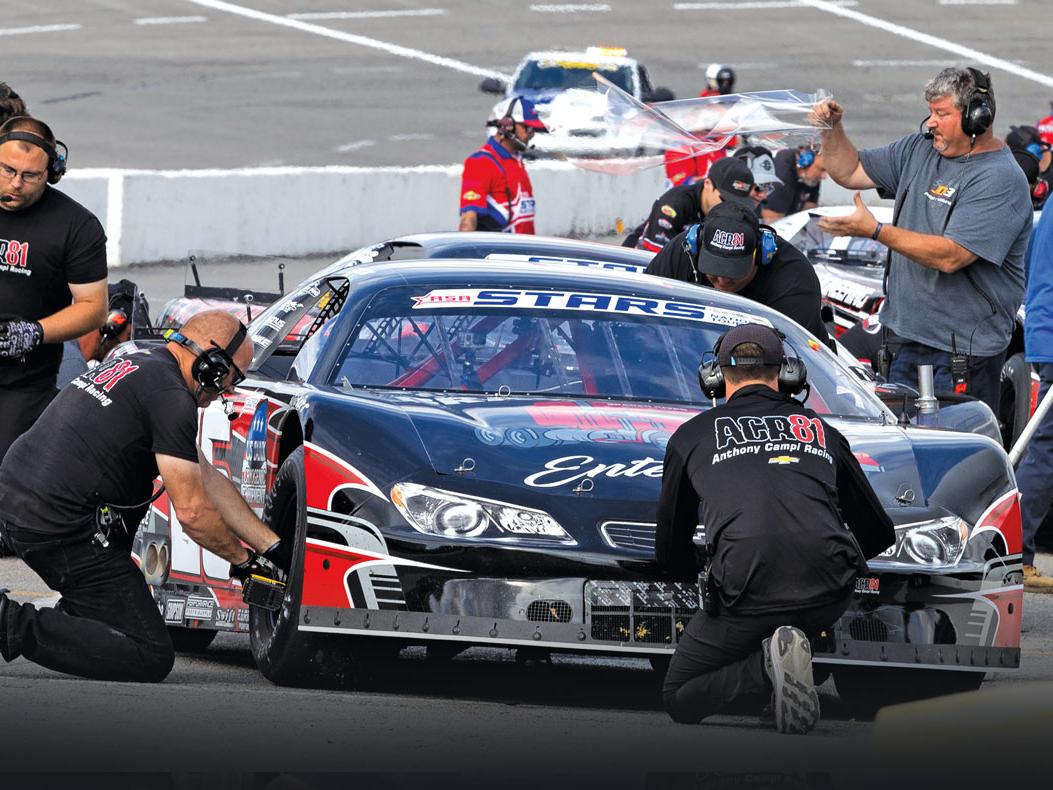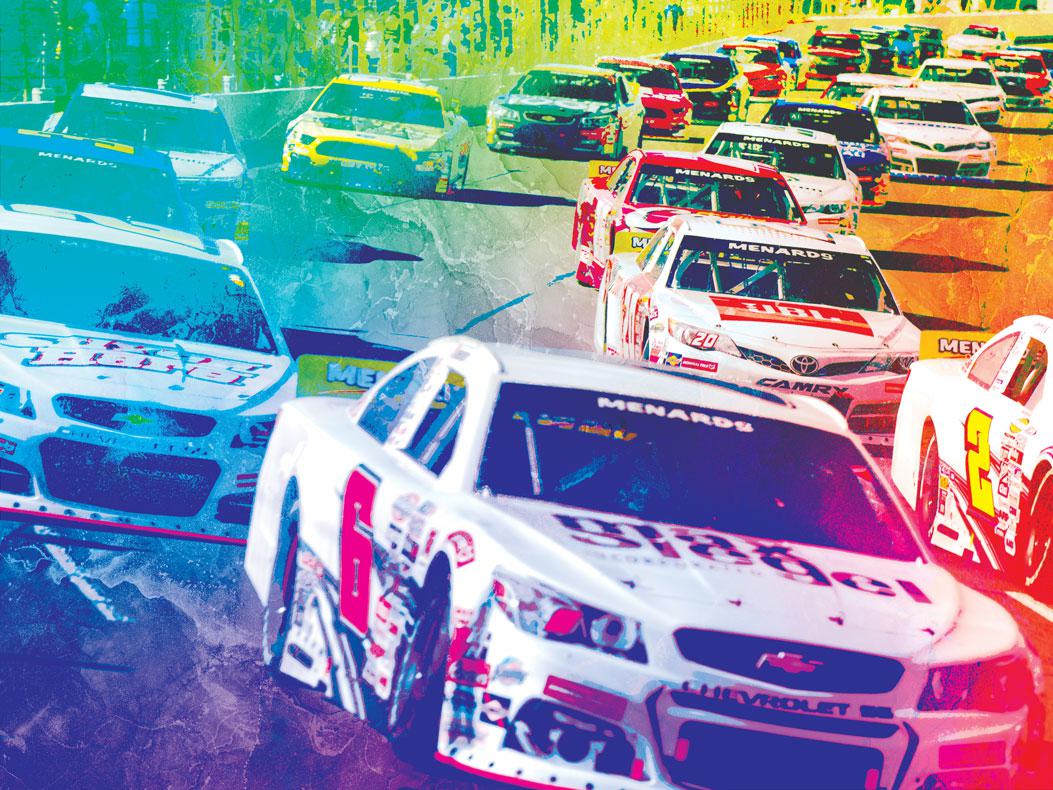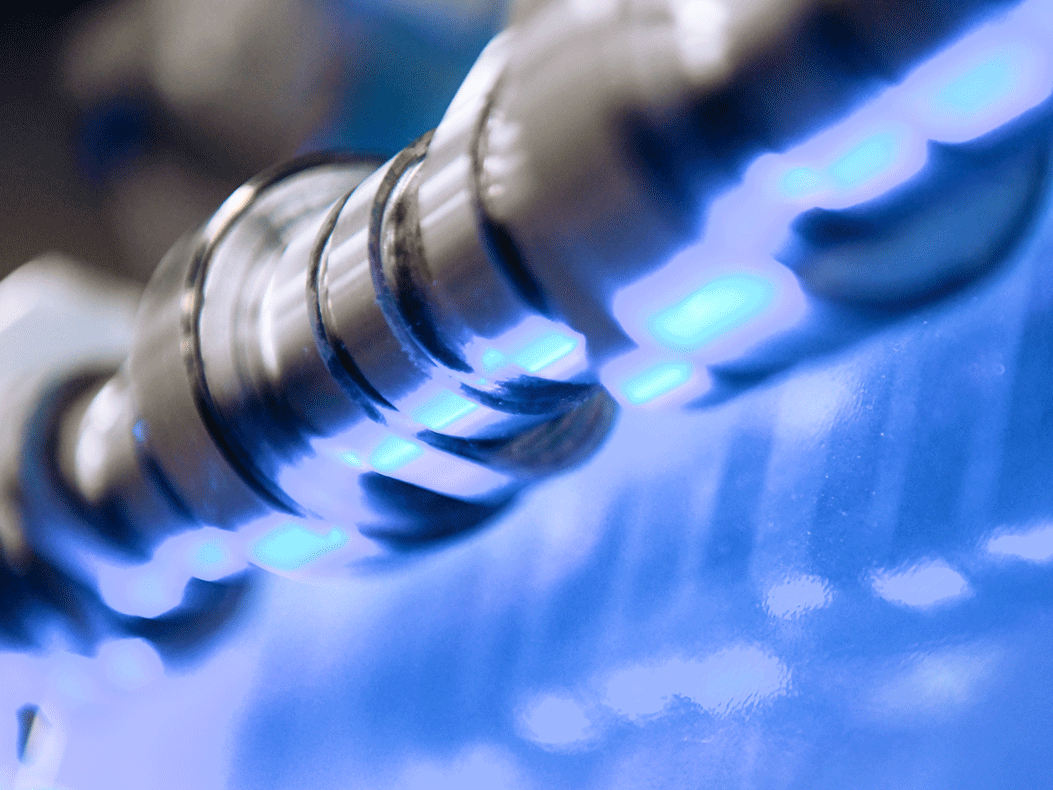Tailor-Made Boost
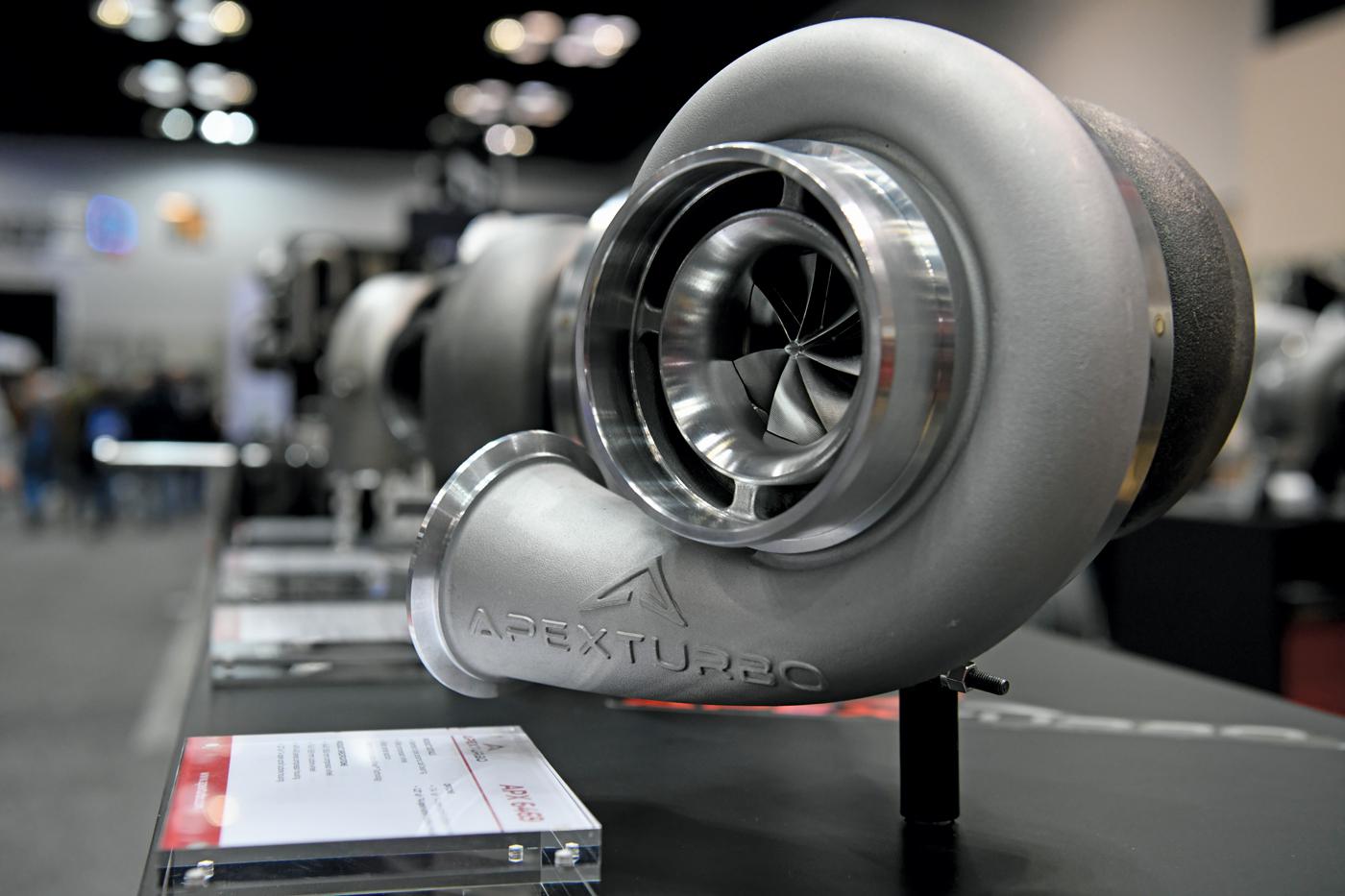
Turbo design is more sophisticated than ever, but so are the rule sets and demands in many racing disciplines. To meet requirements while remaining competitive, racers are turning to custom turbochargers for solutions that are purpose-built for the application.
As increasing numbers of racers embrace turbocharging as their preferred route to big power, turbo manufacturers have been putting in long hours creating bigger, better, and more robust offerings to meet the demand. Advances in compressor housing and wheel designs, material improvements, and expanded product lineups have come not only as a result of larger demand, but also due to the number of companies that are now fighting for a piece of the forced induction pie. As is often the case in the automotive realm, increased competition improves the breed.
“It’s forcing everyone to step up their game,” said Reggie Wynn of Precision Turbo & Engine, Crown Point, Indiana. “The products just keep getting better and better all the time.”
Still, there are situations where an off-the-shelf turbo solution just won’t cut it. As a result, serious competitors across a range of motorsports disciplines are now turning to custom turbochargers as a means of dialing in their setups not only for the demands of their application, but also the specifics of the rule sets in the classes they run in.
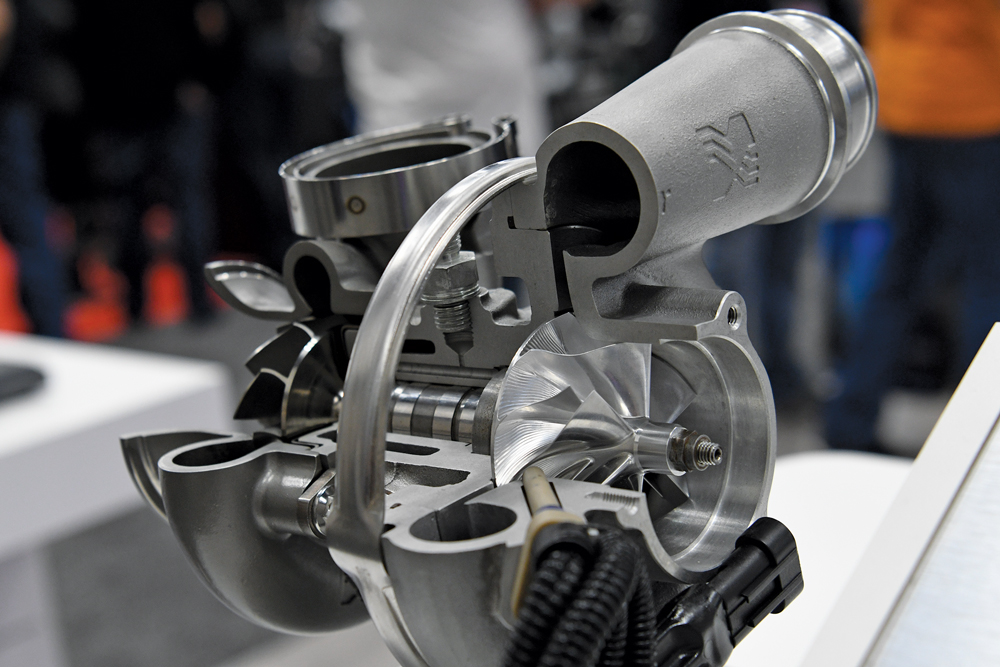
Strategic Development
“At this point it’s about really making these designs state of the art,” said Ryan Salenbien of ApexTurbo, Maybee, Michigan. “Right now the bearing packs are improving because the wheel designs are getting so much better, and we’re seeing more high-quality ceramic ball bearing options for CHRAs [center housing rotating assemblies], which is dramatically increasing the longevity of those turbos. And, of course, the geometries of the wheels keep improving. It’s about optimizing all of the surface area that you have to work with in a given bore size for greater output.”
Geoff Raicer of Full-Race Motorsports in Phoenix, Arizona, told us that, when it comes to motorsports-caliber products, recent increases in flow rates for both the compressor and the turbine have come from a bigger engineering emphasis on aerodynamics. “They’ll use a gas stand to run a very hot, high-velocity stream of exhaust gas through the turbine and a butterfly valve on the exhaust outlet to monitor how much air is actually moving through the system at a given restriction.”
Those aerodynamic improvements have necessitated evolution in other aspects of turbo design in turn. “If you’re gunning to be a top performer, there is nothing that’s going to beat today’s high-end ceramic ball bearing with an aluminum cage that’s plated with silver to prevent galling,” he added. “Little tricks like that have changed not only response, but also longevity. The abuse that today’s turbos can take is pretty wild.”
Going Bespoke
These advances in turbo design are pushing up horsepower numbers at all levels of motorsports, but Wynn noted that racers who are competing at the upper levels of a given discipline are still faced with potential compromises if they opt to stick with off-the-shelf solutions.
“If you’re serious about being competitive, it should be a consideration,” he explained. “Unless you’re just going to get some track time and hang out with friends, a custom turbocharger is going to make more sense in almost any situation.”
While custom turbos typically command a 20–30% premium over their standardized counterparts, the ability to tailor various aspects of a turbo’s specifications for a particular application comes with undeniable benefits. In a growing number of popular racing disciplines, going custom is becoming a necessity.
“When someone comes to us for a custom turbo, they usually need to follow some kind of rule or regulation for the class they’re competing in,” said Salenbien. “So it’s not only being customized for the vehicle and use-case, but also the rule set, and an off-the-shelf option isn’t going to give you the best result in a situation like that.”
Raicer pointed out that trying to make an off-the-shelf turbo perform like a custom solution can lead to its own set of challenges, particularly in drag racing applications. “Drag racers tend to over-speed their turbos because most don’t monitor turbo speed. When you over-speed your turbocharger, you’re exceeding the material’s ability to hold itself together. The blades can actually explode off of the wheel, and beyond the negative impact that would have on a racer’s competitiveness, it’s also incredibly dangerous. Fortunately, companies like Garrett and BorgWarner are starting to integrate speed sensors into their designs, and the data can help a racer make these types of decisions.”
Many of the benefits of a custom-spec turbo are fairly obvious. Configuring a turbo to a specific engine combination and priorities is going to deliver performance that’s better suited to the requirements than a more general-purpose product can. In a growing number of race classes, going custom is more or less mandatory if you have your sights on the podium.
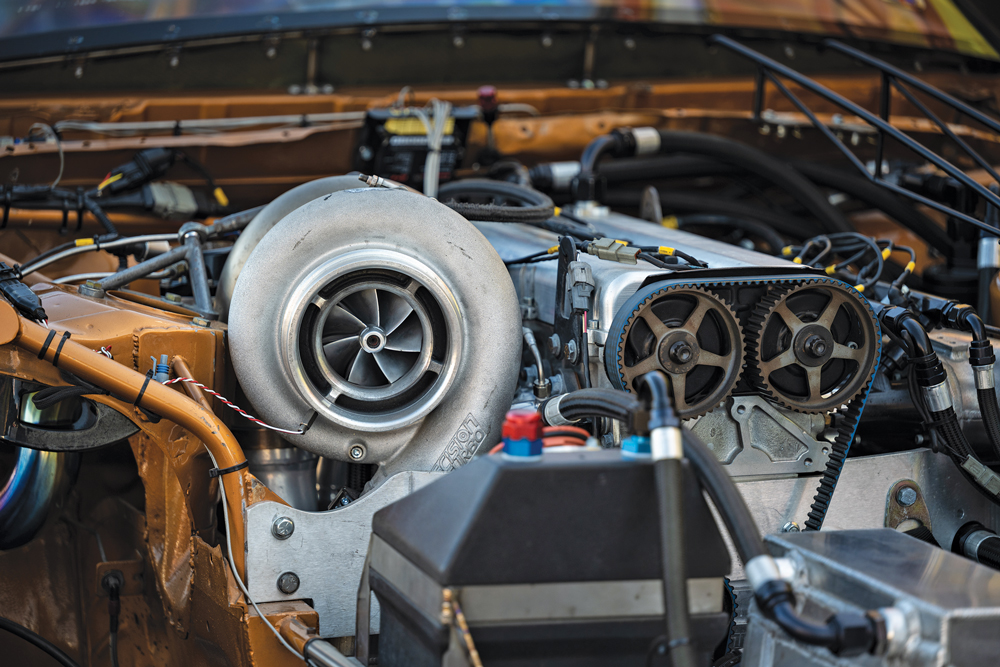
“Typically, you’ll see rule sets that limit inducer and exducer diameters,” Salenbien said. “Sometimes it’ll be related to the surge grooves in the compressor covers. If they’re too large, you might end up being disqualified based on a rule set’s requirements. It’s especially prevalent in drag racing. Most organizations have turbo specifications that can be used for a given vehicle weight. In a sport compact class you might be allowed to run a 57-mm compressor wheel for a weight deduction, or maybe you can run a 73.9-mm inducer at different minimum weight. If the rule said 73.9, anyone who is serious about being competitive is going to look for a turbo with a wheel that’s 73.9 mm. You wouldn’t get an off-the-shelf turbo with, say, a 73.6-mm inducer because you’re potentially leaving performance on the table. So unless you find a turbo that’s made specifically for a certain class and happens to be well-suited to your engine combination, you’re going to have to go custom to comply with that rule set while maximizing performance potential.”
With so many drag racing classes having their own specific requirements, finding an eligible off-the-shelf turbo that’s also ideal for a given application is becoming more difficult by the day. “Inducer, exducer, and the turbine wheel size are typically all going to be factors in a rule set where that’s regulated,” said Wynn. “That’s why it’s really hard to find an off-the-shelf turbo that ideally fits an application. It might be the right inducer size, but you could be giving up some performance by not having a larger exducer, for example.”
Custom turbos are also popular in diesel tractor pulling for similar reasons. “All of the classes in pulling have very specific dimensional characteristics for turbochargers,” said Roger Conley of Harts Turbo, Fayette, Missouri. “So for us, work in that segment is constant. Our dyno is running 120 to 150 days a year just doing development work, and most of that is for truck and tractor pulling. We’ll try two different wheels to see how it responds, then one of our engineers will go back to the office, modify the design based on the results, and plug that into the CNC machine. The next morning the wheel is ready to go, so we bolt it up to the turbo and make another rip.”
In other motorsports like rally, road racing, time attack, and drifting—where the rule sets often don’t regulate turbo specifications—the need to go custom tends to come from priorities that are specific to the format of the discipline. “Those racers tend to focus more on ‘time to torque,’” said Raicer. “If you need world-class response and spool, you usually aren’t going to be able to achieve that with an off-the-shelf turbo. These are situations where you’re on and off of the throttle many times over the course of a run, rather than going wide open throttle for a few seconds at a time like you would be in a drag race. Drag racers don’t really need to worry about response and inertia as much because they’re going to be on boost for the entire pass, but when you’re on and off of the throttle and driving for extended amounts of time, response tends to become a higher priority. That response is typically achieved with things like electronic waste gates and smaller turbos that are made out of more exotic materials.”
Getting Dialed In
Those who are considering a step up to a custom turbo will need to have some information at the ready in order to get something that’s really synced to their needs. “Everyone ultimately wants the most power in the shortest amount of time, but the specs really come down to the needs of a particular application,” said Wynn. “The main difference is that the turbocharger is going to be running at longer amounts of time in a drift car than it is in a drag car, so that driver is probably going to need something that’s a little more durable to ensure that it can handle the demands of that type of racing, and they’re probably going to prioritize response over maximum horsepower.”
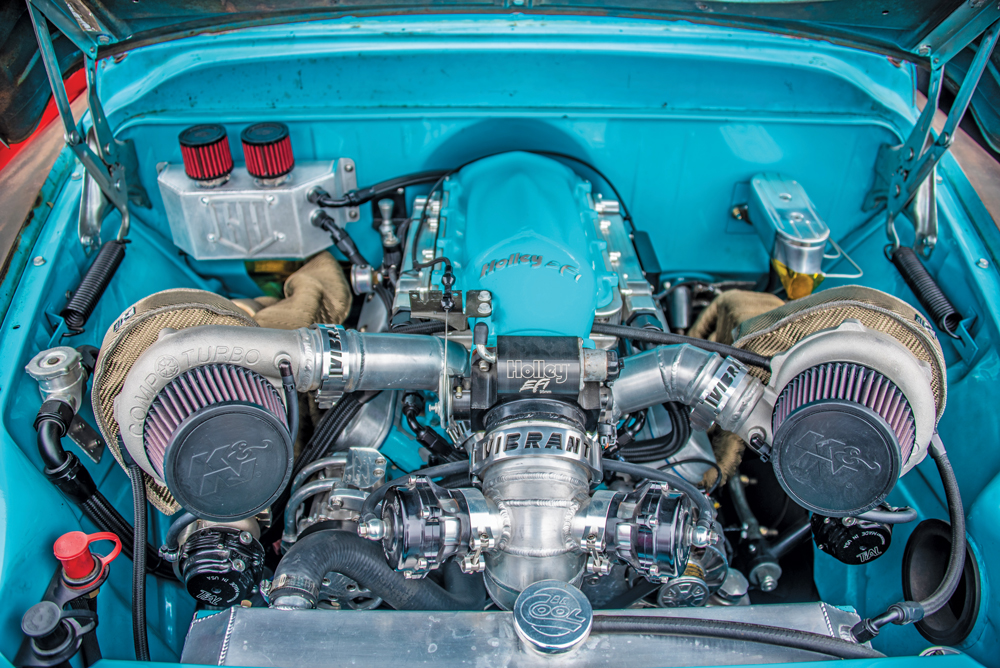
Salenbien suggests that a racer’s engine builder or tuner should be part of the custom turbo conversation, and that it’s important to keep in mind that with a custom turbo, tweaks can be made after the fact when needed. “You have to have a clear understanding of what you’re after, and you need to speak to the right turbo techs in order to get there. But if something doesn’t work the first time out, you can make it work. One of the big benefits that you get with a custom turbo is that it’s upgradable. So if one aspect of the spec doesn’t work, you can make changes to it to get it where you want it to be.”
Custom turbo options tend to cover everything from inducer and exducer sizing and turbine housing design to blade count on the turbine wheel, but it’s important to be aware of how these different options interact with one another. “We can get in the ballpark with the wheel size of it, and then we fine-tune it with the turbine housing,” said Conley. “Changing the sizing of the turbine housing basically changes the rate at which it pinches down the air. So it becomes more restrictive, but it drives the turbocharger harder. If you have a smaller displacement engine, you might use a smaller turbine housing to improve that response and get it to spool up quicker, whereas you might not want to do that with a larger displacement engine that really wants to breathe.”
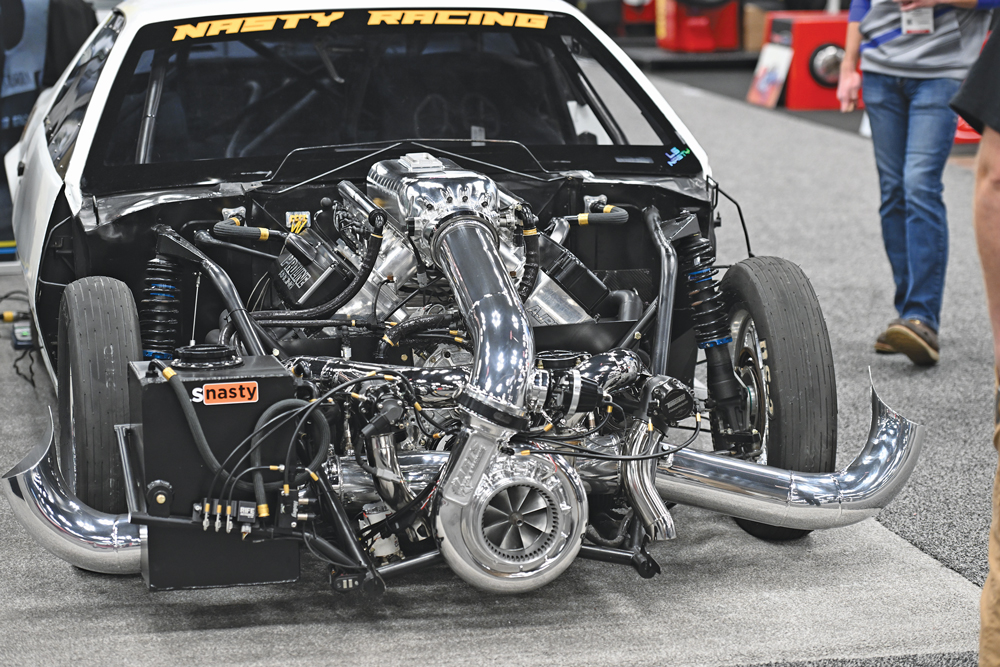
Along with a thorough understanding of their class rule set, racers who are looking to move to a custom turbo generally just need information about their application and their goals. Details like the engine’s displacement and typical rpm operating range, the fuel being used, power goals, and whether the setup will utilize additional power adders like nitrous or a water/methanol injection system can help zero in on the turbo specifications that will deliver the right result. “Ultimately there’s no free lunch,” Raicer said. “Everything in turbocharging requires some level of compromise, and it’s up to the person spec’ing the system to create the best balance based on the needs of the application.”
Going Beyond Plug and Play
Although custom turbos can provide racers with a number of benefits over off-the-shelf units, would-be adopters must keep in mind that custom turbos often need custom supporting components. “Most custom turbos are not a direct bolt-on replacement, so there’s going to be some plumbing requirements,” said Salenbien. “And it’s important to make sure you have proper fittings, drains, and so on. You don’t want to cause any premature wear, so you need to make sure you have an adequate oil feed and the correct amount of pressure.”
Proper mounting is also crucial to turbo performance, and that can be trickier when you’re working with turbos of this caliber. “One issue that we see a lot in classes like Pro Mod is that people will tilt the turbo further than 15 degrees,” said Wynn. “When you do that, it causes the oil to want to stay inside the bearing housing because it’s gravity-drained out of the turbocharger, so it just keeps building up more and more, and that can cause oil to leak out of the bearing housing. We tend to see this issue more often at this level because these are physically large turbos—whether it’s a custom unit or something off the shelf—so it’s easier to start running out of real estate in the engine bay.”
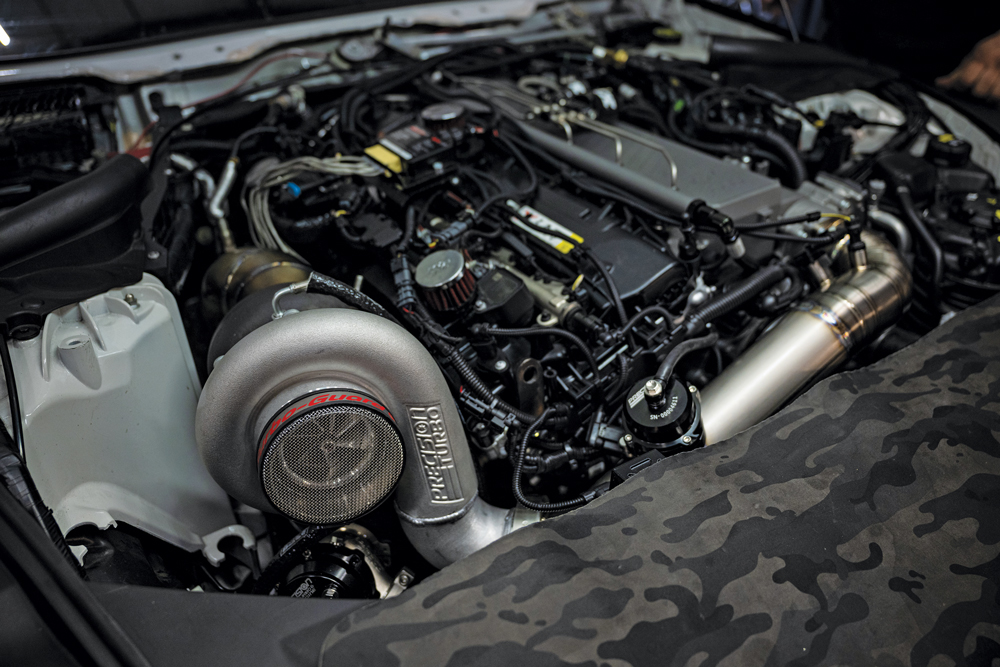
Despite any additional cost and complexity that comes with the move to a custom turbo, Salenbien expects to see continued demand for these offerings over the coming years, particularly at the upper levels of motorsports. “I don’t know if we’ll ever have a situation where there are enough options available on an off-the-shelf product that it will make custom turbos irrelevant. Serious competitors don’t want to compromise on performance or reliability, and you’re always going to need to do something to the turbo in order to really set it up for requirements of a given application.”
As bigger advances are made in turbo design, Conley expects to see those innovations arriving in high-end custom offerings well before they make their way into more mainstream products. “We’re pushing more into boreless technology, where the hub has gone all the way down to the point where you don’t see a shaft coming through with a nut on it, and we’ve seen that there are other manufacturers that are headed in that direction as well. That boreless design creates more surface area for the blade to compress the air, so you’re improving flow on the hot side just by taking that bulky hub and nut out of the equation. Competition in turbo development is really pushing the technology forward. We make something better, then someone else comes back with their own improvements, and we respond in turn. It’s the American way.”
SOURCES
ApexTurbo
apexturbo.com
Full-Race Motorsports
full-race.com
Harts Turbo
hartsturbo.com
Precision Turbo & Engine
precisionturbo.net
 MEMBERSHIP LOGIN
MEMBERSHIP LOGIN JOIN PRI
JOIN PRI
